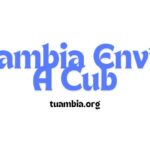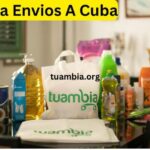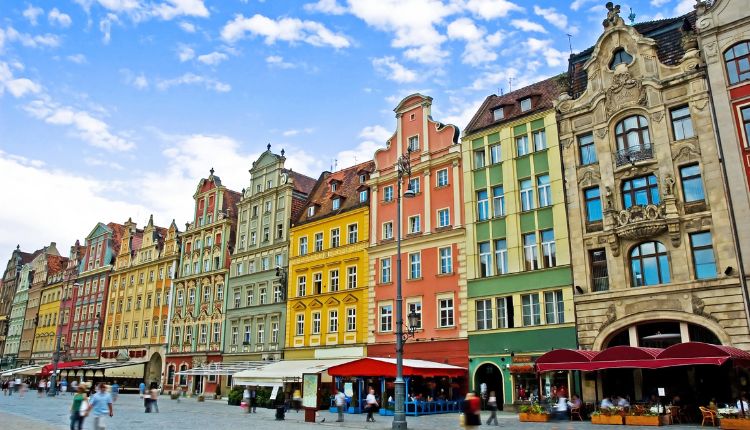Wrocław is compact, flat, and threaded by the Odra River. That mix makes it easy to rack up steps without strain, string together green corridors, and use the islands and embankments as built‑in wayfinding. Most major sights sit within a walkable radius of the Old Town, while broad parks like Szczytnicki and Grabiszyński offer soft paths and shade for low‑impact miles. The tram network fills gaps when weather turns or legs tire. If you want a practical wellness framework for a short break, Wrocław fits: move every few hours, eat light and seasonal, spend time under trees, and close each day with heat and sleep.
This guide builds around four pillars. Move with gentle intensity: brisk walks, park laps, bike loops, or a morning jog by the river. Eat light/seasonal by leaning on the market hall and veg‑forward kitchens near the Rynek. Breathe in green zones and quiet courtyards that lower mental load. Restore with sauna heat, cold rinses, and earlier bedtimes. Use the blocks like Lego: swap a park when rain arrives, slide a museum into the hottest hour, or add a sunset loop if energy is high. Distances are short, choices are simple, and the river keeps your internal compass steady.
Where to Stay for Healthy Habits
Pick a base that reduces transit friction. On the Old Town edge—one or two streets off the Rynek—you’ll have quiet nights, quick access to the market hall, and immediate river paths. Ostrów Tumski (Cathedral Island) brings evening calm and traffic‑light ambience, with bridges that cue short reflective walks. Nadodrze gives an arts‑district feel and a direct line to island greens and river stairs. All three keep you inside a 20–30‑minute walking bubble of the main parks and indoor backups.
Favor simple wellness perks over gimmicks. A property with loaner bikes, a quiet courtyard, or a sauna/steam nook beats a noisy lobby. Rooms that truly darken, decent airflow, and solid showers support sleep and recovery. If you track steps, set a daily floor (e.g., 12–15k on days 1–2, 10–12k on day 3) and let that anchor choices. Pack earplugs and a light mask even in calm quarters; cathedral bells and weekend patios can run late. When you eat out, pick seats with back support and a stable table height—bar perches and lounge couches fatigue posture after a full day—whereas a simple booth row (yes, even familiar restaurant booths) lets you sit upright while you downshift.
Add two practical habits: request a courtyard‑facing room at booking to limit street noise, and keep a tiny “wind‑down kit” on the nightstand (electrolyte sachet, lip balm, earplugs, eye mask). If air feels dry after sauna days, hang a damp towel in the bathroom while you shower; the warmth adds a touch of humidity that helps sleep. Leave your shoes by the door and stretch calves for one minute before bed—small rituals that pay off by the third morning.
Day 1 — Rivers & Cathedrals Reset
Theme: Land softly. Sync pace to water and old stone, then sleep early.
Morning — Riverfront shake‑out (30–45 minutes). Start on Bulwar Xawerego Dunikowskiego, the embankment opposite Cathedral Island. The stepped seating and long river sightlines make it a natural loop anchor: walk or jog between bridges, pausing for a few slow breaths facing the towers. It’s flat, open, and easy to extend by crossing to adjacent islands.
Light breakfast — market basics. Head to Hala Targowa for fruit, yogurt, nuts, and a small bakery item. The hall’s produce stands and counters keep portions honest, and you can buy a second serving for tomorrow’s fridge. Keep coffee modest and pair it with water so you don’t chase hydration all afternoon.
Late morning — Hydropolis (calm indoor start). Walk or tram to Hydropolis, a water‑themed science center in a historic water tank. The galleries are paced and focused, which makes slow breathing feel natural. Silence notifications for an hour and pick a single exhibit to linger on; depth beats speed here.
Lunch — back to the market. Return to Hala Targowa for a market‑first plate: soup plus salad, or bread with cottage cheese, tomatoes, and herbs. Split caffeine in thirds across the day (morning espresso, early‑afternoon half‑cup, herbal tea at night) to protect sleep. Pocket a handful of nuts for later.
Afternoon — Green corridor to Centennial Hall. Tram or walk to Szczytnicki Park for shaded laps on soft paths, then step into the Japanese Garden for fifteen unhurried minutes over wooden bridges. Finish at the Pergola and pond beside Centennial Hall—a big, airy space where you can stroll a half‑ellipse under vines and log easy steps.
Sunset & evening — Ostrów Tumski. Cross into Cathedral Island for golden‑hour bridge views and quiet courtyards. Watch for the lamplighter if you’re around at dusk. Close with a plant‑forward dinner near the Rynek; aim to be back in your room early, lights low, phone out of reach.
Day 2 — Parks, Zoo & Sauna Heat Dose
Theme: Low intensity plus heat therapy to prime recovery and deep sleep.
Morning — Botanic and easy long walk. Begin with a lap in the University Botanic Garden next to Ostrów Tumski if it’s open, or repeat your embankment loop. Keep the heart rate conversational. After a short tram hop, enter ZOO Wrocław and head toward the Afrykarium, where warm, humid air and large aquatic exhibits make an excellent slow‑breathing environment. Drift, pause, breathe, repeat.
Lunch — riverside picnic. Build a kit from a bakery and the market (rye bread, cucumbers, tomatoes, a soft cheese or bean spread, fruit). Carry it to Wyspa Słodowa for a simple meal on the grass. After eating, walk the neighboring islets for another thousand steps without trying.
Afternoon — Restore Block at Aquapark. Shift to Aquapark Wrocław for a Saunarium circuit: dry sauna, steam, short cold plunge, and a ten‑minute lounge between rounds. Two or three cycles are enough for most visitors. If you swim, add an easy ten minutes in the sports pool first. Rehydrate with electrolytes afterward and spend five minutes on calves and hips before you exit.
Evening — Comfort‑light Polish dinner. Pick broth‑based soup, grilled fish, or a vegetarian plate with fermented sides like pickles or kefir. A slow 20‑minute loop through the quieter Old Town side streets helps digestion and downshifts the nervous system before bed. Keep screens dim and brief; sleep arrives faster when your eyes get a longer dark period after heat exposure.
Day 3 — Move With the City (Water or Wheels)
Theme: Skill‑based play plus neighborhood discovery.
Morning Option A — Water session (SUP/kayak). Flatwater on the Odra is friendly in calm conditions. If you’re new, book a short intro so you can focus on soft knees, quiet hips, and steady strokes. Balance improves rapidly when you look toward the horizon instead of your feet. If wind picks up, switch to a short embankment jog and keep the paddling idea for a future visit.
Morning Option B — City bike circuit. Use a city bike for a circuit: Nadodrze murals → island bridges → Grabiszyński Park. At Grabiszyński, look for an outdoor fitness station and run two light rounds of pulls, pushes, and squats. Ride back on embankments at a conversational pace. If running suits you better, trade the ride for two shaded park laps and one short hill walk.
Brunch — whole‑grain and seasonal. Choose a café near your route for eggs or tofu with greens, whole‑grain bread, and fruit. Keep coffee modest; pair it with water or herbal tea so energy stays level for the afternoon.
Mid‑day micro‑excursion — Polinka gondola. Take the short Polinka cable car over the Odra near the Polytechnic for an easy shot of views and novelty. It’s a couple of minutes door to door and breaks up the day without draining legs.
Afternoon — Quiet hour and mobility finisher. If skies turn, choose a light museum hour: the Panorama Racławicka rotunda is a single “big room” experience with timed entry. If you prefer classic galleries, the National Museum is broad yet compact enough for a gentle loop. Back in your room, close with fifteen minutes on hips, ankles, and upper back.
Evening — Sunset pause and farewell dinner. Return to the river for a final sit, note three wins from the trip, and keep dinner simple: seasonal soup, salad, and one shared dessert. If travel starts early tomorrow, lay out clothes and pack now; mornings feel calmer when decisions are done.
Real‑World Healthy Food & Drink Tactics
Markets to lean on. Hala Targowa anchors fruit, veg, nuts, bread, and simple dairy or plant proteins. Go early for selection, then again late day for a top‑up. Combine produce with a soup or salad from a nearby counter to keep lunch light. If you’re unsure what to order, copy the plate in front of you and halve the portion.
Veg‑forward dining near the center. Long‑running plant‑based spots near the Rynek make dinner decisions easy when you want hot food without heavy sauces. Rotate a couple of cafés so plates don’t repeat across three days and keep an eye out for seasonal sides—you’ll find beets, cabbage, and dill in more guises than you expect.
Portion and plate strategy for Polish classics. Order pierogi to share with a side salad rather than a solo full portion. Favor clear soups (rosół) or beet broth over cream bases. Ask for fermented sides; acidity balances richer bites. Rough rule: build plates as 50% veg, 25% protein, 25% starch. If bakery sweets tempt you, pair them with a loop around the nearest square.
Hydration map. Carry a bottle and refill at cafés when you order. Space caffeine: morning, then a half‑cup early afternoon. In warm weather, bias breaks toward tea houses or indoor exhibits that run cooler; in winter, pair hot tea with short bursts of steps to stay loose between museums.
Running, Walking & Micro‑Workouts
Three easy routes.
- Embankment Bridges Loop (30–45 min). Start at Bulwar Dunikowskiego, cross one bridge out and the next back, and use the steps as a built‑in stretch zone. Shorten your stride on cobbles to reduce impact.
- Szczytnicki Park shaded laps. Soft paths are kind to knees; use the Japanese Garden gate as a cool‑down marker.
- Old Town sunrise circuit. Move through squares and side streets before crowds; the quiet helps you set intent for the day.
Outdoor fitness. Mark one park station—Grabiszyński Park has options—and run two circuits of pulls, pushes, hinges, and squats. Keep reps submaximal so you finish fresh. Drop a plank and side plank at the end.
Wet‑weather swaps. Use hotel stairs with courtesy, add an Aquapark swim, or run a fifteen‑minute mobility flow on a towel. If conditions stay poor, loop a low‑stimulus indoor venue to keep steps coming without getting soaked.
Mindful Culture Without Burnout
Low‑stimulus picks. The Japanese Garden rewards slow movement and attention to water, wood, and plant textures. Hydropolis is paced and themed, which helps you settle. Botanical pockets near Ostrów Tumski serve as micro‑breaks between bridges and churches.
One “big room” per day. Anchor each day with a single large, coherent space: Centennial Hall grounds (plus Pergola) on day one, Afrykarium on day two, Panorama Racławicka on day three. One anchor reduces decision churn and still gives you strong stories to bring home.
Micro‑mindfulness prompts. On bridges, take five slow breaths while you track the current and footsteps. In cloisters and courtyards, notice the echo and temperature shift. On island benches, scan the skyline for spires and check what changes as clouds move. Small sensory checks beat long sit‑downs if you’re new to formal practice.
Practicalities: Getting In, Getting Around, Timing
Arrivals. Wrocław Główny is the main rail hub; the airport sits a short ride away. Trams are frequent and simple, but much of this plan is built for walking between clusters. Buy tickets by card where available and keep a small stash of coins as backup.
Best seasons and packing. Spring and early autumn bring mild days and steady light; summer means long evenings but stronger sun. Pack layers, a light rain shell, and swimwear for sauna/plunge days. Shoes: one cushioned pair for harder surfaces, one flexible pair for parks. A compact umbrella helps on quick city sprints between stops.
Bikes, SUP, and simple safety. Stay on marked bike routes and keep speed modest near island paths. On the water, use a PFD and avoid windy channels if you’re new. Finish sessions with a slow five‑minute walk to let heart rate settle. At night, choose well‑lit river stretches and cross bridges at a relaxed, alert pace.
Rain Plan / Heat Plan / Cold Plan
Rain. Run a tight loop: Hydropolis → market lunch under cover → Afrykarium → tea house → short museum. You’ll keep moving while staying mostly indoors and close to trams. Carry a thin tote for damp layers and switch socks mid‑day if feet get soggy.
Heat. Move early, then favor shaded Szczytnicki Park and the Pergola. Eat a lighter indoor lunch, take a tea or museum break during peak heat, and save your longer walk for late evening along the river when stones cool down.
Cold. Walk Ostrów Tumski and the islands for steady movement without long wind exposure, rotate soup‑forward cafés, and lean into Saunarium time. Keep gloves handy even on short hops; warm hands make all the difference when you’re reading maps or snapping photos.
Budgeting Your Healthy Trip
Costs to expect. Market breakfasts and picnic lunches are inexpensive and nutrient‑dense; dinners vary with venue and portion size. Aquatic centers with sauna zones sit in the mid‑range for European city pools. Zoo and Panorama tickets use timed entry. Bike and paddle rentals vary by season. Cards work almost everywhere, but carry a little cash for small stalls. Save by batching indoor sites on one day and building the rest around free greens.






